Mar
16
2016
Brent
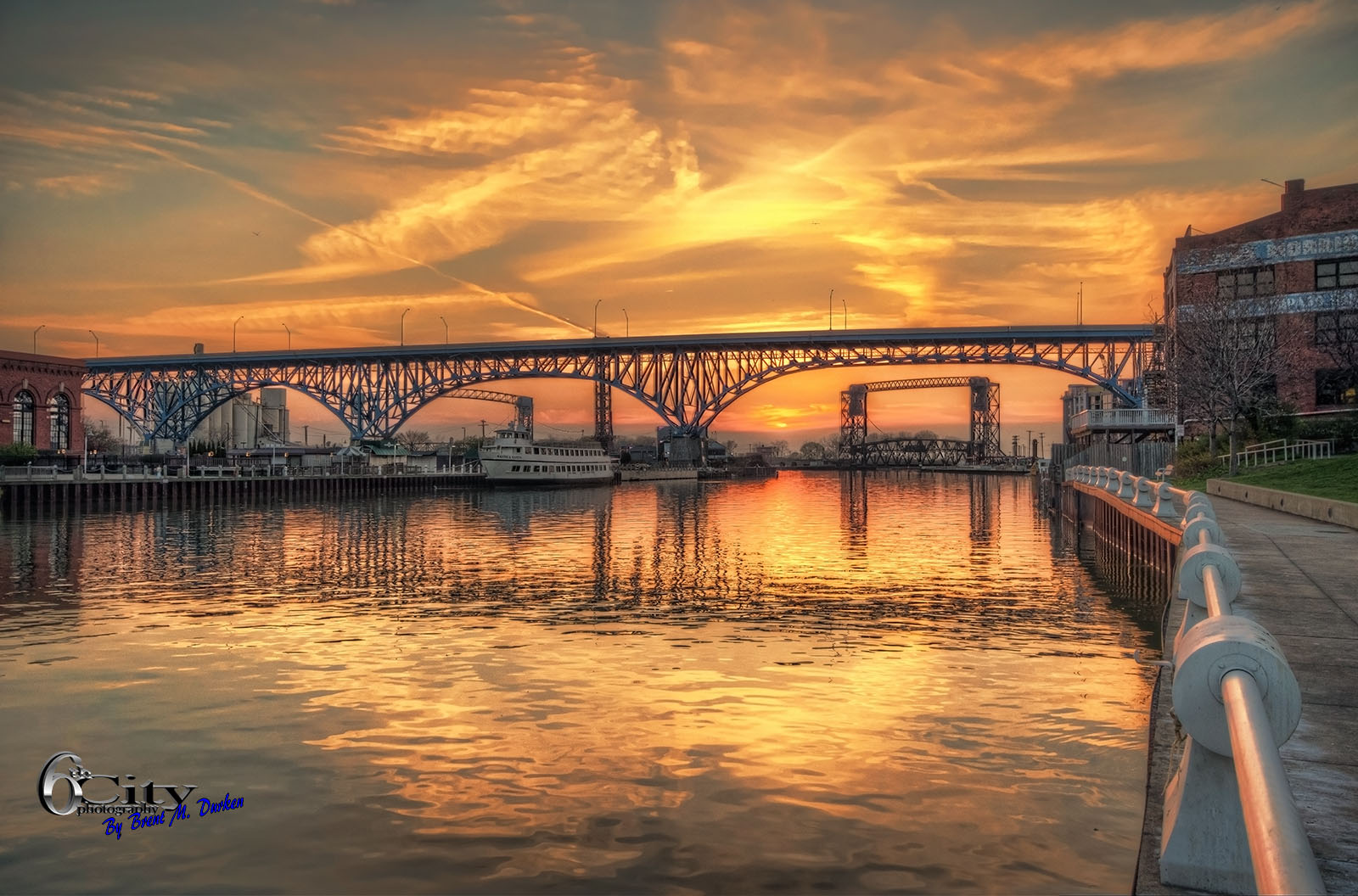
Info on the Cuyahoga River from Wikipedia: “The Cuyahoga River is famous for being “the river that caught fire,” helping to spur the environmental movement in the late 1960s. The name “Cuyahoga” is believed to mean “crooked river” from the Mohawk Indian name “Cayagaga,” although the Senecas called it “Cuyohaga,” or “place of the jawbone.” At least 13 fires have been reported on the Cuyahoga River, the first occurring in 1868. The largest river fire in 1952 caused over $1 million in damage to boats, a bridge, and a riverfront office building. On June 22, 1969, a river fire captured the attention of Time magazine, which described the Cuyahoga as the river that “oozes rather than flows”.
The 1969 Cuyahoga River fire helped spur an avalanche of water pollution control activities, resulting in the Clean Water Act, Great Lakes Water Quality Agreement, and the creation of the federal Environmental Protection Agency and the Ohio Environmental Protection Agency (OEPA). As a result, large point sources of pollution on the Cuyahoga have received significant attention from the OEPA in recent decades. These events are referred to in Randy Newman’s 1972 song “Burn On,” R.E.M.’s 1986 song “Cuyahoga,” and Adam Again’s 1992 song “River on Fire.” Great Lakes Brewing Company of Cleveland named its Burning River Pale Ale after the event. Water quality has greatly improved and, partially in recognition of this improvement, the Cuyahoga was designated one of 14 American Heritage Rivers in 1998″.
More info:https://en.wikipedia.org/wiki/Cuyahoga_River
All photos are copyright of Brent Durken – www.brentdurken.com
To purchase a digital download of this photo for your website or blog please visit: https://www.smugmug.com/gallery/n-zRG6xB/
Purchase a print of this photo: Brent Durken Print Sales
http://brent-durken.pixels.com/
no comments | tags: burning river, city, city scene, cityscape, Cle, Cleveland, Cleveland City, cleveland flats, Cleveland photograph, Cleveland photography, cleveland photos, cleveland skyline, Cleveland Skyline canvas, Cleveland Skyline prints, cuyahoga river, downtown, dynamic, erie, flats, green, hdr, high, metroparks, nature, Ohio, Photo, Photography, scenic, screensaver, sunset, Sunset on the Burning River Cleveland, urban Photography
Feb
3
2016
Brent

The Flats East Bank Project is quickly becoming a hotspot along the river in Downtown Cleveland. Here is some more information about this project from the Flats East Bank website: Flats East Bank redevelopment is a partnership between The Wolstein Group and Fairmount Properties driving $750 million in waterfront redevelopment with an 18 story office tower, trendy hotel, state of the art fitness club, and a range of local restaurants. Fall 2015 marked the completion of Phase II with even more amenities to the growing riverfront district as it added 241 unit high-end residential, restaurants, entertainment venues, and extensive riverfront boardwalk. The late Bert L. Wolstein and his wife, Iris S. Wolstein, started Developers Diversified Realty, which grew into a successful national real estate development company. They later opened Heritage Development. Bert and Iris have long been generous to Cleveland – having donated more than $40 million to local hospitals, colleges and other institutions. Mr. Wolstein worked for more than 25 years to transform the rundown Flats East Bank into a first-class, vibrant, accessible riverfront. After he passed, Iris, along with her son Scott, executive chairman at Developers Diversified Realty, as partners in The Wolstein Group, continued to pursue Bert’s vision. In 2005, after they rigorously worked with multiple parties to assemble land and financing, Iris and Scott unveiled their ambitious plans for this landmark development and even after the project was precipitously slowed by the Great Recession, Iris remained determined to see the development occur. The future of The Flats East Bank is looking very bright. “This isn’t just another entertainment district – it’s a catalytic neighborhood that’s going to place this city on the map as an urban waterfront destination,” Scott Wolstein said of the revitalization of the area. “The redevelopment of the Flats East Bank was my father’s dream but he never got to see it materialize. We knew the potential was vast, but now to see the blood, sweat and tears of the last few decades come to fruition is very gratifying,” said Scott. Driving more people to live, work and play, downtown, will only benefit the city. “I want Greater Clevelanders to be excited about this project and what it means for the future of Cleveland.”
For more information on the Flats East Bank please visit: http://www.flatseastbank.com/
All photos are copyright of Brent Durken – www.brentdurken.com
To purchase a digital download of this photo for your website or blog please visit: https://www.smugmug.com/gallery/n-zRG6xB/
Purchase a print of this photo: Brent Durken Print Sales
http://brent-durken.pixels.com/
no comments | tags: city, cityscape, Cle, Cleveland, Cleveland City, Cleveland photography, cleveland photos, cleveland skyline, Cleveland Skyline canvas, Cleveland Skyline prints, cuyahoga river, downtown, dynamic, east bank, flats, Flats East Bank, Flats East Bank Cleveland, scenic, screensaver, urban Photography
May
15
2013
Brent

From the Mapleside Farms website: “Mapleside Farms is a 100-acre fully functioning apple orchard located in Brunswick, OH. Mapleside Farms has long been a destination for families and friends to get together to enjoy a delicious home-cooked meal, fresh homegrown produce, piping hot home baked pies and an amazing view of the Northeast Ohio countryside. It’s the kind of place where children who once came to Mapleside with their grandparents now bring their own grandchildren to share the same traditions”.
Check them out at http://www.mapleside.com/index.php
Today’s Quote:
“Dream no small dreams for they have no power to move the hearts of men”. – Johann Wolfgang von Goethe
no comments | tags: brunswick, Cle, Cleveland, Cleveland photography, cleveland photos, dynamic, hdr, Mapleside farms, medina, nature, Photo, Photography, scenic, screensaver, sunset
Feb
11
2013
Brent

Today’s Cleveland photo: The Charles Brush Memorial
Here is some information about Charles Brush from the Green Energy Ohio website: “Like fellow Ohioan Thomas Edison, Charles F. Brush, born in Euclid in 1849, was a restless backyard tinkerer and clever entrepreneur. A child prodigy, by age 15 he had built electrical gadgets and microscopes and telescopes for school chums. Brush graduated from the University of Michigan in 1869, with a degree in mining engineering. Brush is best remembered for his dynamo and arc lights, which illuminated a Cincinnati physician’s home in 1878 then Cleveland Public Square in 1879. These and more than 50 patented innovations made Brush a wealthy man. His company, Brush Electric Company, merged with companies that eventually formed General Electric, which still brings good things to light”. More info on Brush and his electric windmill: http://www.greenenergyohio.org/page.cfm?pageId=341
For more information about other famous Clevelanders check out the Citiview website: http://citiviewcleveland.com/features/famous-clevelanders/
“Men love to wonder, and that is the seed of science”. Ralph Waldo Emerson
no comments | tags: Charles Brush, Charles Brush Memorial, Cle, Cleveland, Cleveland photography, cleveland photos, downtown, hdr, high, lakeview cemetery, Ohio, Photo, Photography, scenic
Jan
19
2013
Brent
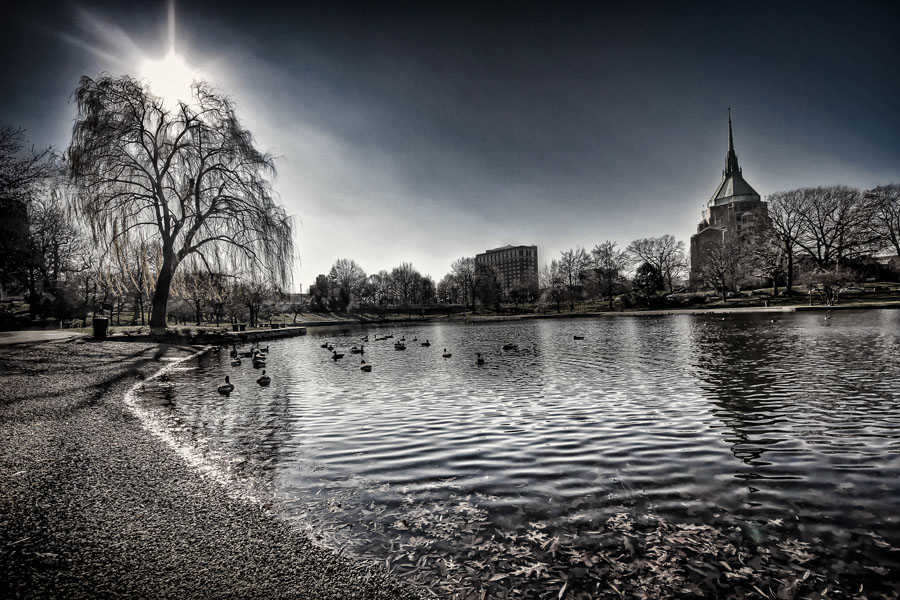
Today’s Photo: Wade Park in Cleveland, Oh
From Wikipedia: “Wade Park is a park in the University Circle neighborhood of Cleveland, Ohio. An idyllic swath of land in one of Cleveland’s busiest neighborhoods, the park was built on land donated by Jeptha Wade with the intention of using part of the property building for an art museum. Its most prominent feature is the Cleveland Museum of Art and the adjacent Wade Park Lagoon. While not technically a historical landmark on its own, the park falls within the eponymous Wade Park historical district and essentially serves the landscape for most of the buildings included in the registry entry.
Established on the land donated to the city by Jeptha Wade in 1882, Wade Park today largely serves as a museum campus for the Cleveland Museum of Art, as well as several other Cleveland cultural institutions. One of the most prominent features of the park — and of University Circle — is the Wade Lagoon. The lagoon is situated on the south end of Wade Park, in front of the museum. Bounded by East Boulevard on the west, Martin Luther King Jr. Drive on the east and Euclid Avenue on the south, the lagoon provides a tranquil retreat as well as a home for fish, which are mainly ornamental koi.”
For more info: http://en.wikipedia.org/wiki/Wade_Park_(Cleveland_park)
Today’s Quote: “Light makes photography. Embrace it. Admire it. But above all, know light. Know it for all you are worth, and you will know photography.” – George Eastman
no comments | tags: Cle, Cleveland, cleveland art museum, cleveland museum of art, Cleveland photography, cleveland photos, culture, downtown, dynamic, hdr, Photo, Photography, scenic, screensaver, university circle, wade lagoon, wade oval, Wade Park
Dec
15
2012
Brent
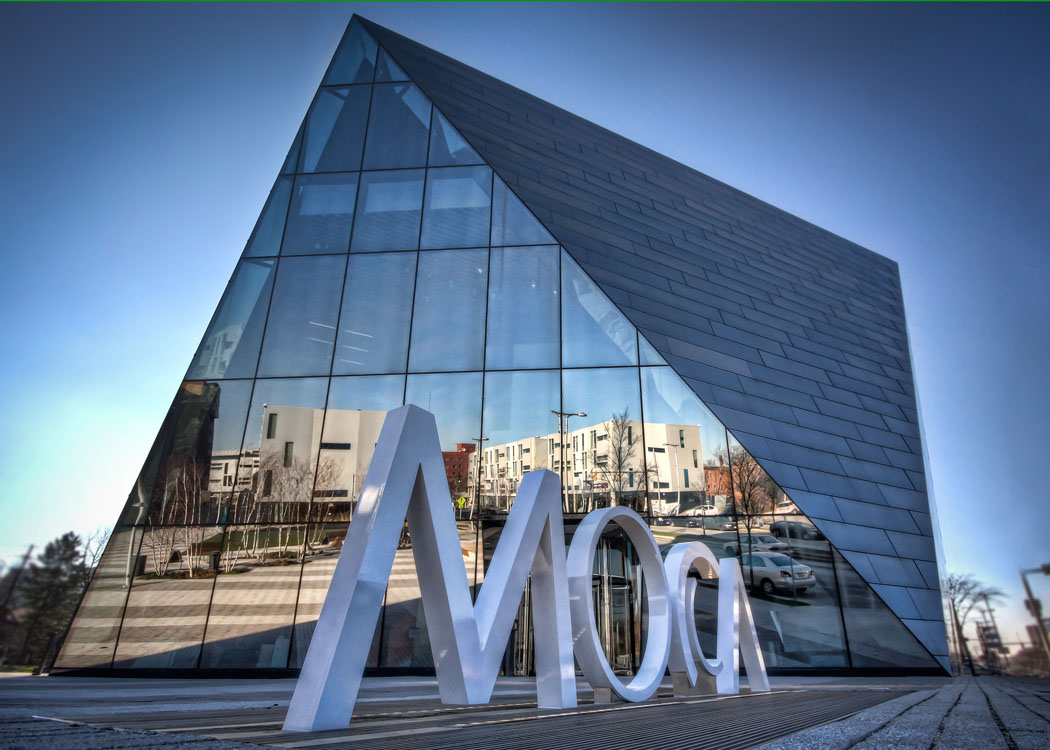
Todays photo is of the Cleveland Museum of Contemporary Art (MOCA). This beautiful new building is within walking distance of both Little Italy and Wade Oval. Here is some information directly from MOCA’s website about the new building:
“MOCA’s new building is designed to serve as a catalyst for creativity and growth in a cosmopolitan Cleveland neighborhood, which is home to one of the country’s largest concentrations of cultural, educational and medical institutions.
The nearly 34,000-square-foot structure, which is 44 percent larger than MOCA’s former rented space, demonstrates that a museum expansion need not be large in scale to be ambitious in all respects. Devised for both environmental and fiscal sustainability, the design is at once technically inventive, visually stunning and highly practical.
The dynamic structure was designed by Iranian-born Farshid Moussavi of London, formerly with Foreign Office Architects (FOA) and now principal of Farshid Moussavi Architecture (FMA). This is her first U.S. commission and her first museum.
In addition to FMA, the design team includes executive architects Westlake Reed Leskosky, headquartered in Cleveland and designers of more than 50 cultural buildings throughout the United States.
Moussavi says that museums today are not just homes for art, but serve multiple functions and host a variety of activities. “Our design for MOCA Cleveland aims to provide an ideal environment for artists and visitors and to foster creativity and variety in exhibitions and programs.”
Because MOCA is a non-collecting institution – one of the relatively few such contemporary art museums in the country – its new building does not need to accommodate collection galleries, says MOCA Executive Director Jill Snyder. “This building’s design is a perfect expression of the museum’s philosophy and programs. Flexibility is key to a program like ours that embraces aesthetic, conceptual and cultural diversity, and displays works in a great variety of media and genres.”
The four-story building, which anchors the Uptown district, rises 60 feet from a hexagonal base to a square top, where the primary exhibition space is located. All four floors contain areas for either exhibitions or public programs.
Clad primarily in mirror-finish black Rimex stainless steel, the façade will reflect its urban surroundings, changing in appearance with differences in light and weather. Three of the building’s six facets, one of them clad in transparent glass, will flank a public plaza designed by James Corner Field Operations, a New York-based landscape architecture and urban design firm. The plaza will serve as a public gathering place and will link MOCA to Uptown attractions and amenities, including the expanded Cleveland Institute of Art, designed by Burt, Hill with MVRDV, and new commercial space and residential units, designed by Stanley Saitowitz/Natoma Architects Inc.
Upon entering the building, visitors find themselves in an atrium where they can see the dynamic shape and structure of the building as it rises. This space leads to MOCA’s lobby, café and shop, and to a double-height multi-purpose room for public programs and events. From there, visitors may take MOCA’s monumental staircase, a dominant architectural feature of the building, to the upper floors. On the top floor the 6,000-square-foot gallery space has no fixed dividing walls, allowing for a variety of configurations. This floor also contains a gallery designed for new media work and the Dick and Doreen Cahoon Lounge, which overlooks the plaza and Uptown.”
For more information about this great museum click here:
http://www.mocacleveland.org/
Today’s Quote: “Not everybody trusts paintings but people believe photographs”. – Ansel Adams
2 comments | tags: art, background, city, Cle, Cleveland, cleveland art museum, Cleveland Museum, cleveland museum of art, Cleveland Museum of Contemporary Art, cleveland photogr, cleveland photos, Contemporary Art, culture, downtown, dynamic, euclid, little italy, MOCA, Photo, Photography, range, scenic, university circle, wade oval
Nov
17
2012
Brent

This photo of downtown Cleveland was taken from the Columbus Rd. Bridge. From Wikipedia: “Cleveland obtained its name on July 22, 1796 when surveyors of the Connecticut Land Company laid out Connecticut’s Western Reserve into townships and a capital city they named “Cleaveland” after their leader, General Moses Cleaveland. Cleaveland oversaw the plan for what would become the modern downtown area, centered on Public Square, before returning home, never again to visit Ohio. The first settler in Cleaveland was Lorenzo Carter, who built a cabin on the banks of the Cuyahoga River. The Village of Cleaveland was incorporated on December 23, 1814. In spite of the nearby swampy lowlands and harsh winters, its waterfront location proved to be an advantage. The area began rapid growth after the 1832 completion of the Ohio and Erie Canal. This key link between the Ohio River and the Great Lakes connected the city to the Atlantic Ocean via the Erie Canal and later via the St. Lawrence Seaway; and the Gulf of Mexico via the Mississippi River. Growth continued with added railroad link. Cleveland incorporated as a city in 1836”.
Today’s Quote: “Faith consists in believing when it is beyond the power of reason to believe”. – Voltaire
no comments | tags: city, Cle, Cleveland, culture, cuyahoga river, downtown, dynamic, hdr, night, Ohio, Photo, Photography, scenic, screensaver
Jun
8
2012
Brent

From Wikipedia: “The lower Cuyahoga River has been subjected to numerous changes. Originally, the Cuyahoga River met Lake Erie approximately 4,000 feet (1.2 km) west of its current mouth, forming a shallow marsh. The current mouth is man-made, and it lies just west of present-day downtown Cleveland, which allows shipping traffic to flow freely between the river and the lake. Additionally, the U.S. Army Corps of Engineers periodically dredges the navigation channel of the otherwise shallow river to a depth of 27 feet (8.2 m), along the river’s lower 5 miles (8.0 km), from its mouth up to the Mittal Steel Cleveland Works steel mills, to accommodate Great Lakes freighter traffic which serves the bulk (asphalt, gravel, petroleum, salt, steel, and other) industries located along the lower Cuyahoga River banks in Cleveland’s Flats district. The Corps of Engineers has also straightened river banksand widened turning basins in the Federal Navigation Channel on the lower Cuyahoga River to facilitate maritime operations”.
no comments | tags: background, blue, city, Cle, Cleveland, culture, cuyahoga river, downtown, dynamic, erie, hdr, high, Manistee, Ohio, Photo, Photography, range, scenic, screensaver, Shipping on the Cuyahoga
May
30
2012
Brent
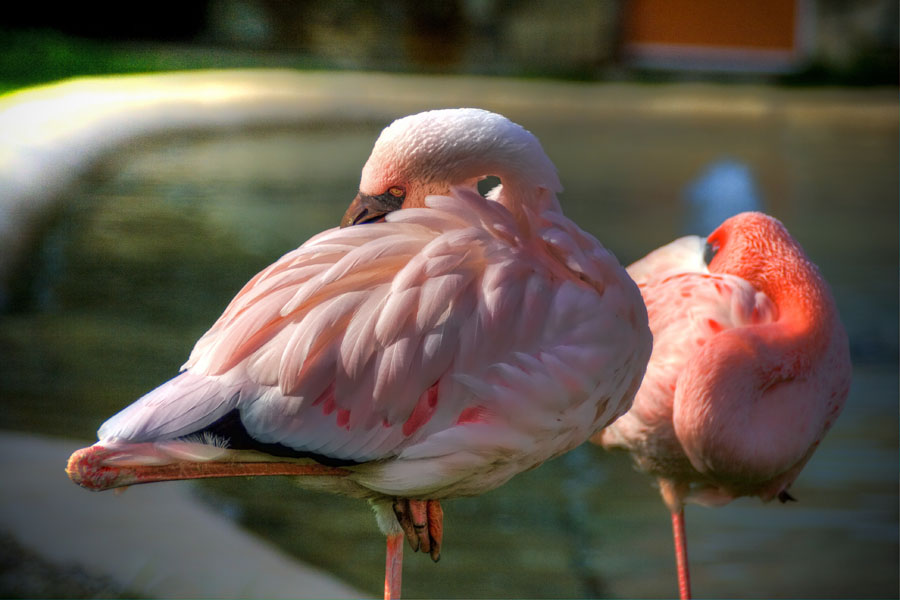
Today’s Photo: The Pink Flamingo
From the Cleveland Metroparks Zoo website:
What’s remarkable about a flamingo? Plenty. These birds are pink, have exceptionally long necks and the longest legs, in proportion to body size, of all birds. The beak is uniquely shaped and adapted for pumping and filtering water while feeding on crustaceans and algae in marshes and lagoons. Both in water and on land, flamingos are able to lock their long legs into position for resting and sleeping on one leg.
For info on how you can see more of these amazing birds:
http://www.clemetzoo.com/tour/exhibit.asp?exhibit_id=25
Today’s Quote: Birds sing after a storm; why shouldn’t people feel as free to delight in whatever remains to them? – Rose Kennedy
no comments | tags: city, Cle, Cleveland, cleveland metroparks zoo, culture, dynamic, flamingo, hdr, metroparks, nature, Ohio, Photo, Photography, pink, pink flamingo, scenic, screensaver, zoo
May
16
2012
Brent
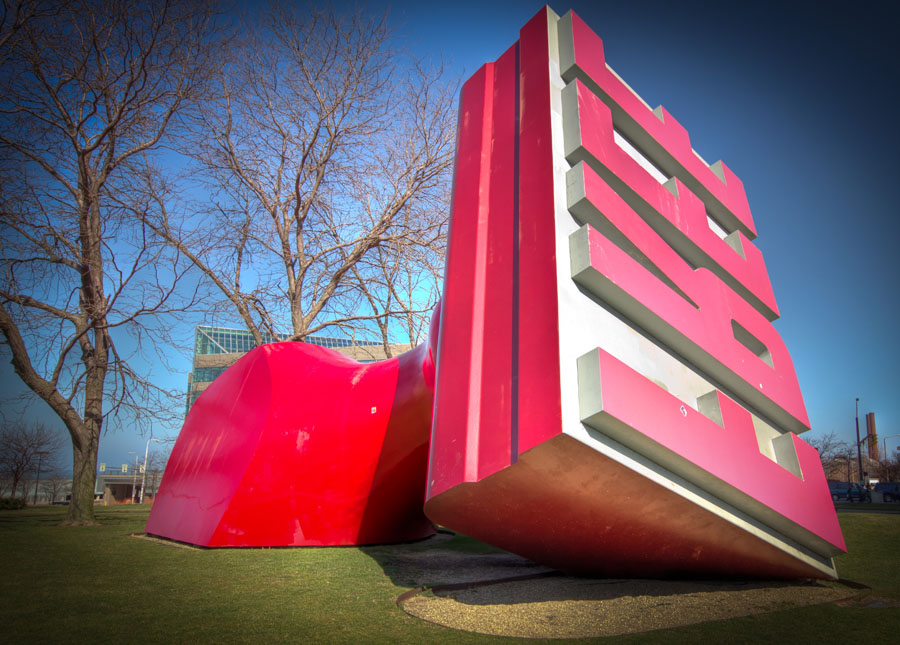
The Free Stamp by Danish artists Claes Oldenburg and Coosje Van Bruggen
From about.com:
“The 50-foot tall aluminum and steel replica of a hand stamp sits downtown at Willard Park on Lakeside Avenue, next to City Hall. The artwork was originally commissioned in 1982 by the Standard Oil Company to sit in front of their soon-to-be-constructed headquarters building on Public Square (now the BP Building). The piece was originally to sit with the “Free” stamp facing downward, hidden from view. However, before the piece could be installed, Standard Oil was acquired by the British Petroleum Company (BP) who did not favor the piece. “Free Stamp” sat in storage in Indiana for years before BP donated it to the city of Cleveland.”
More info: http://cleveland.about.com/b/2008/05/31/free-stamp-in-cleveland.htm
Today’s Quote: A work of art is the unique result of a unique temperament. –Oscar Wilde
no comments | tags: art, background, city, Cle, Cleveland, culture, downtown, dynamic, free stamp, hdr, high, Ohio, Photo, Photography, public square, range, scenic, screensaver, Standard Oil, willard park









